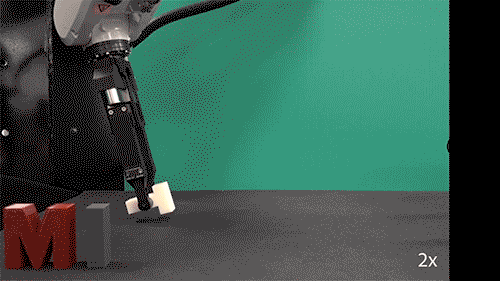Engineers from the Massachusetts Institute of Technology (MIT) have figured out a way to make a robot grasp an object quicker and more efficiently.
MIT showed off the robot in a GIF exactly of the claw picking up and adjusting its grip on an object, which is more complicated than it looks for a machine. According to the release, it can take a robot tens of minutes to plan out the possibilities of the sequence, but with a new algorithm, it takes less than a second.
The results, which were published Thursday, October 17, in The International Journal of Robotics Research, will allow robots in industrial settings to figure out their environments quicker.
“This is a way to extend the dexterity of even simple robotic grippers because, at the end of the day, the environment is something every robot has around it,” Alberto Rodriguez, associate professor of mechanical engineering at MIT, said in a statement.
Physical tasks that will benefit from the algorithm include a variety of physical tasks, like picking up and sorting objects in a bin and intricate tool use.
“Most factory robots that use tools have a specially designed hand, so instead of having the ability to grasp a screwdriver and use it in a lot of different ways, they just make the hand a screwdriver,” Rachel Holladay, a graduate student in electrical engineering and computer science at MIT, said in a statement. “You can imagine that requires less dexterous planning, but it’s much more limiting. We’d like a robot to be able to use and pick lots of different things up.”
MIT is known for its work in robotics, and you could even argue that it is a leader in the robotics industry. A tiny mobile motor created by a team at MIT in July could end up changing the way we view and build robots. The robot consists of five tiny fundamental parts that have the ability to assemble and disassemble into different functional devices — with the end goal of having it build other, larger robots.
It’s groundbreaking in the sense that the new system is a step closer to creating a standardized set of parts that could be used to both assemble other robots and to adapt to a specific set of tasks, just like the new algorithm published Thursday.

